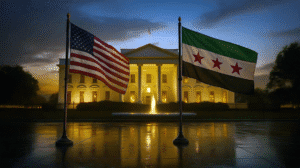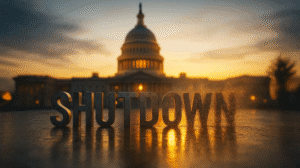When Nepal’s government abruptly banned 26 major social media platforms, including Facebook, YouTube, and X, perhaps it would have thought a mere silence and submission, but what followed was a revolution. A dispute over internet access became a national protest against corruption, nepotism, and poor political leadership when thousands of young Nepalis poured to the streets of Kathmandu and beyond. What started as an app-related protest quickly turned into a movement calling on the nation’s leaders to answer for their actions, resulting in at least 19 deaths, hundreds of injuries, and the resignation of Prime Minister K.P. Sharma Oli.
Thousands of young people, many in their teens and twenties, were drawn to the streets as the protests quickly expanded around the Himalayan region after it all started in Kathmandu. In sensitive areas like Baneshwor, Singhadurbar, and Narayanhiti, authorities enforced curfews, and police used water cannons, tear gas, and rubber bullets in response. After protesters tried to break through barricades right next to Parliament, the army was sent to New Baneshwor.
Even with the harsh restriction, the rallies continued to gain support. “We have already won today,” a protest leader told the crowd, urging calm after infiltrators tried to provoke violence. In the evening, the administration of Prime Minister K.P. Sharma Oli declared that the contentious restriction will be lifted, with Communication Minister Prithvi Subba Gurung acknowledging that the aspirations of Nepal’s “Gen Z” could no longer be disregarded.
Why the Ban Sparked Fury
The ban was announced on September 5, targeting platforms like Facebook, Instagram, WhatsApp, YouTube, and X after tech companies failed to register with Nepal’s Ministry of Communication and Information Technology. Officials cited a Supreme Court directive requiring companies to appoint local grievance officers and compliance representatives. While apps like TikTok, Viber, and Nimbuzz complied, the absence of global giants left millions of users suddenly disconnected.
For many, the ban struck at the heart of daily life and livelihood. With 13.5 million Facebook users and 3.6 million Instagram users in Nepal, social media is not only a source of communication but also a lifeline for small businesses and tourism promotion. “We were triggered by the ban, but that is not the only reason we are here,” 24-year-old student Yujan Rajbhandari told AFP. “We are protesting against corruption that has been institutionalised in Nepal.”
From Hashtags to Streets
Anger over corruption, privilege, and the widening gap between elites and ordinary citizens fueled slogans like “Shut down corruption, not social media.” Online campaigns under hashtags such as #NepoKids and #NepoBabyNepal highlighted the lavish lifestyles of politicians and their children compared to the struggles of millions of young Nepalis who migrate abroad or take dangerous jobs to survive. Viral videos showed the difference between Gucci bags and luxury vacations of the elite to the coffins carrying migrant workers back to their countries.
Youth unemployment hovers around 19%, and remittances from overseas workers account for a staggering 33% of Nepal’s GDP. For many protesters, the ban symbolized a leadership blind to economic realities and everyday hardships.
A ‘Final Revolution’?
What started as anger at censorship has morphed into what protesters call “The Final Revolution.” This is a leaderless movement that demands accountability, transparency, and the resignation of corrupt officials. Celebrities, students, and ordinary citizens have rallied behind the same cause suggesting a generational shift that could reshape Nepal’s fragile democracy.
As a bottom-line to the riot, Oli resigned on September 9, facing relentless public pressure which indeed marked a dramatic victory for this youth movement. Whether this revolt brings lasting reform remains uncertain, but one thing is clear that Nepal’s Gen Z has found its voice, and they are quite unwilling to be silenced.


















